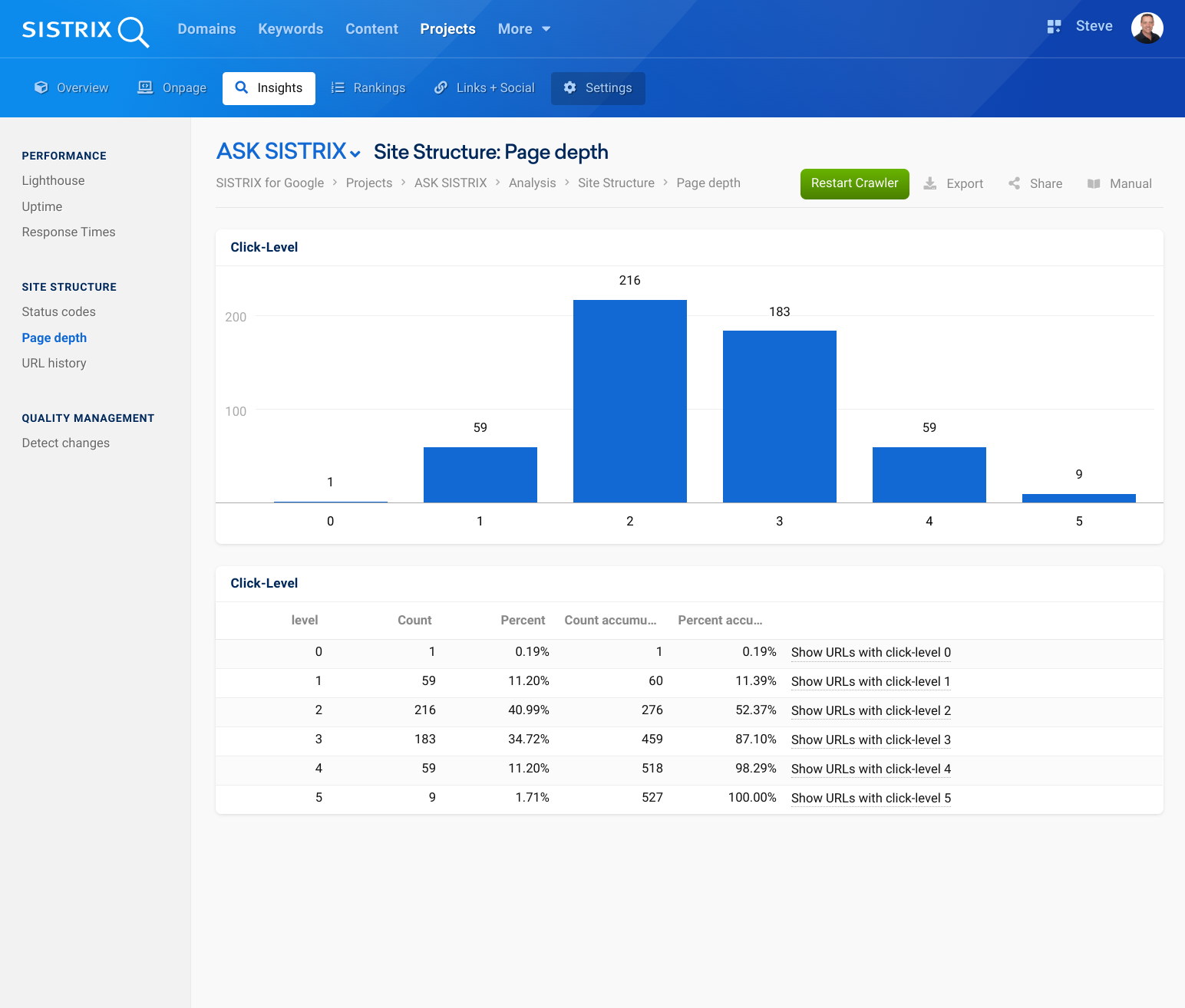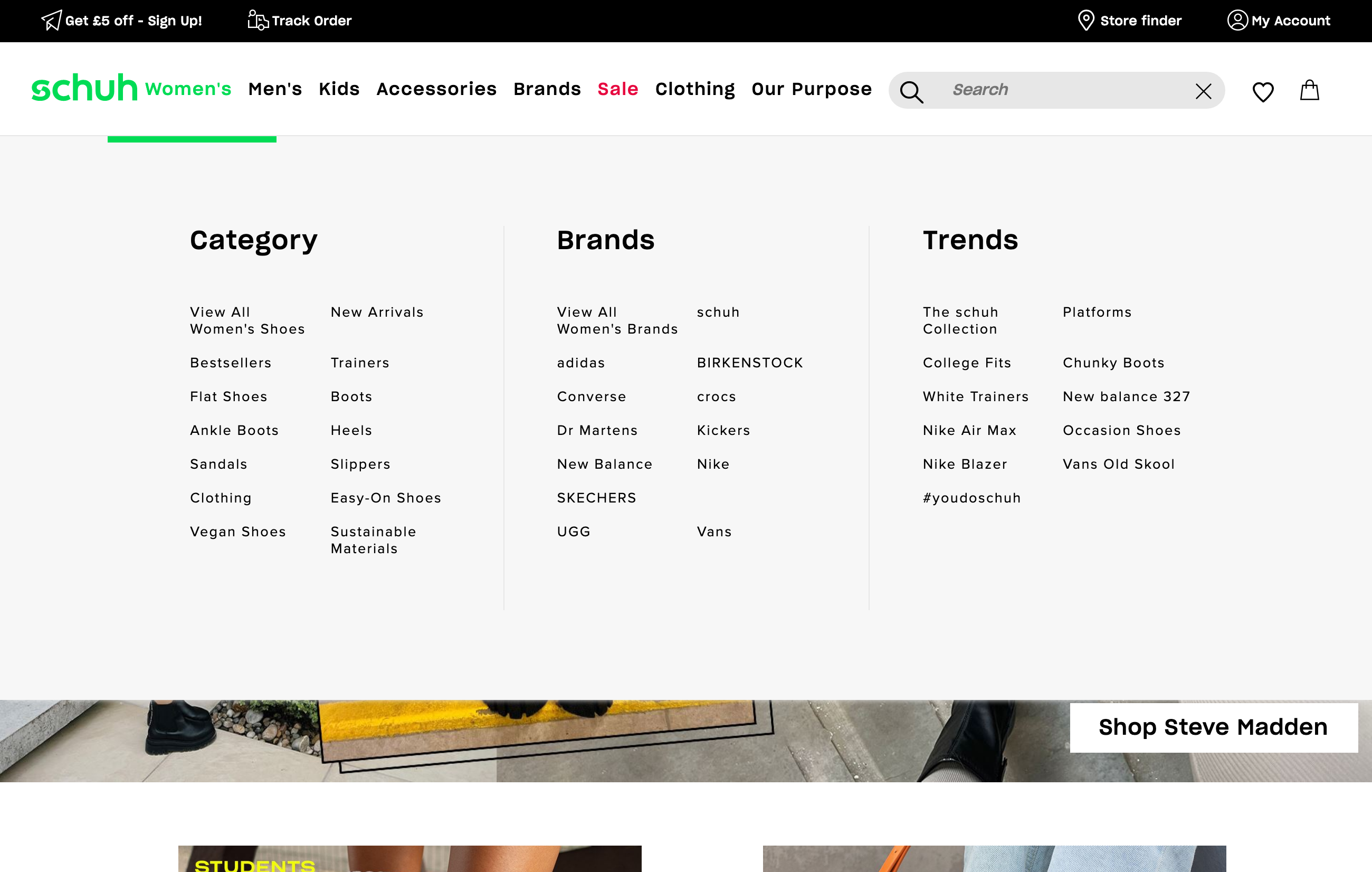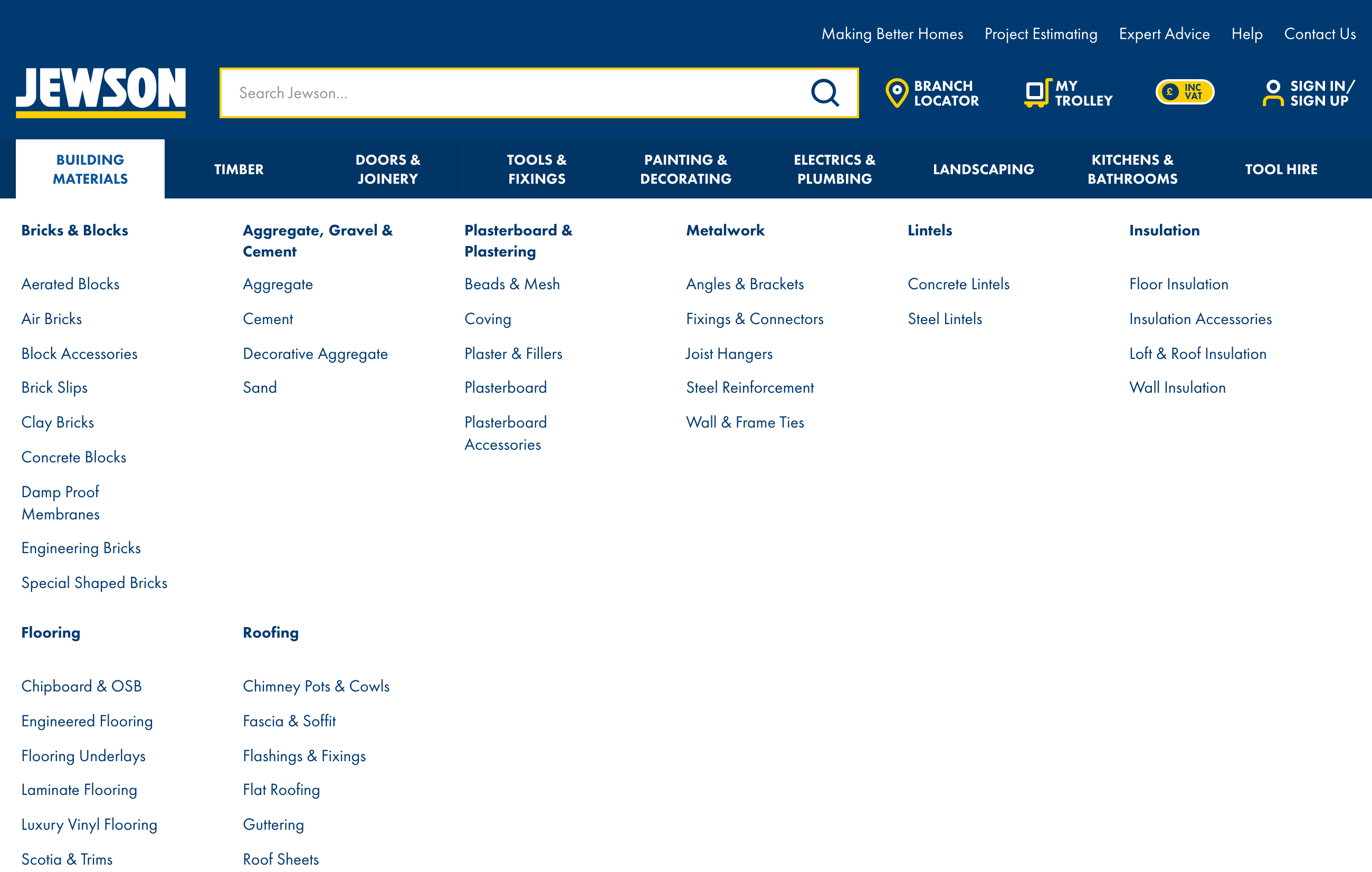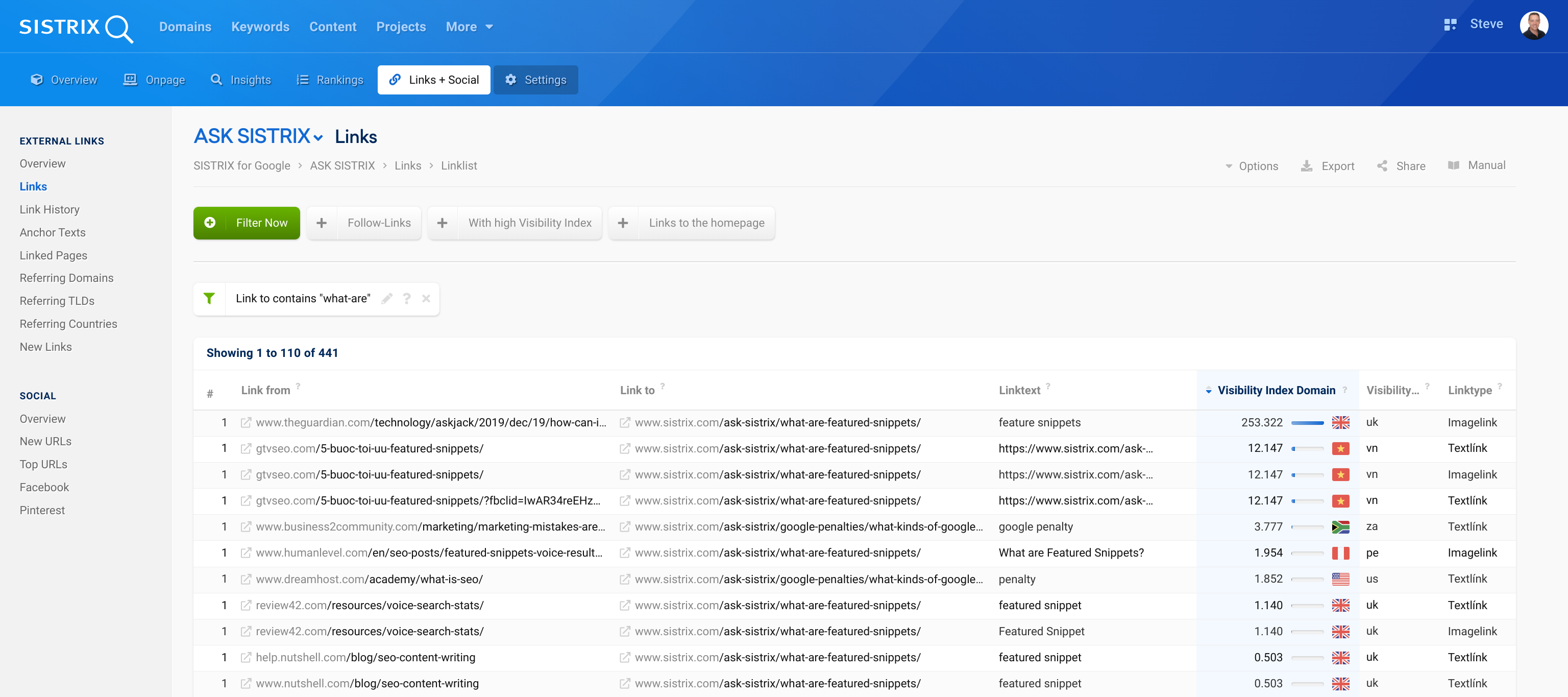Internal links are very essential for search engines like Google to find content and to find out which contents of a website are relevant.
- Link vs. Structure
- Basic Factor #1: Accessibility of All Content
- Basic Factor #2: Click Depth
- Example: Pagination
- Focus on Relevant Pages
- What are relevant pages?
- How do you strengthen relevant pages?
- Optimise Template #1: Menu
- Use strong pages to link to strong pages
- Incorporate shortcuts in the tree
- Clarity of the Anchor Texts
- Conclusion
- The SEO Strategy Guide
- SEO Strategy Made Easy
- Competitor Analysis Made Easy
- Keyword Research Made Easy
- Determine Search Intent and Plan Website Structure
- Optimise Search Results and Generate More Clicks
- Create and Optimise Content
- Internal Linking
- International SEO
- Link Building Strategy
- Use Google Search Console + Google Verticals
With the right strategies, you can ensure that your company’s priorities are better mapped for search engines – and subsequently also achieve better rankings.
Link vs. Structure
The topic of “Internal Linking” only pertains to links and not the structure of the website. The difference is quickly explained with an example:
- A shop has a homepage = level 1
- A three-level category structure (e.g., “painting > brushes > fine brushes”) = levels 2–4
- The products are linked from the third category level so that they are on the fifth level.
However, if you examine the website in terms of linking, it is possible that the website does not have five levels at all. If the website has a menu that links to all three category levels, then – in terms of links – it only has three levels: the homepage on the first level, all category pages on the second level and all product pages on the third level.
Google primarily regards the internal links rather than the structure. This is why it is important to break away somewhat from the structure of the website when optimising internal linkings.
Basic Factor #1: Accessibility of All Content
When it comes to internal linking, one thing is especially important: All content on a website should be accessible via internal links. This is because crawlers like the Googlebot access websites mainly through internal links.
However, there are cases, where Google indexes content, even though internal links were forgotten. In these cases, this content still happens to end up in the index because Google finds it in other ways, for example, via XML sitemaps or external links. However, this is not optimal, because internal links serve as a signal for relevance calculations. Content that Google finds through XML sitemaps lacks these signals, so it may well happen that these pages generate worse rankings.
If you want to check whether all contents of a website are linked internally, you will need a crawler that crawls the entire website and then compares it with an XML sitemap. In practice, this is a problem that can be neglected, as modern content management and shop systems tend not to make this mistake.
Basic Factor #2: Click Depth
However, it is not just a question of whether the contents are internally linked somehow, but whether they also have an acceptable click depth in each case. Click depth means: How many clicks on links (<a href=””>…</a>) does it take to get to a particular page from the homepage? If the click depth is too high, it is possible that a certain page may no longer be crawled. And then the links from this page may not be followed any more.
Which click depth is considered too high cannot be answered definitely. This depends on the particular website structure and on the popularity of the entire website. As a guideline, however, one can certainly say that a two-digit click depth is too high. Surely, no website operator wants their content to not be crawled and indexed – regardless of how good it is.
This is why it makes sense to check the click depth of all content on the website. This is also best done with a crawler that can show the click depth of all content. With the SISTRIX Optimizer, you can display the respective click depths by analysing the “click levels”:

You can also retrieve the respective URLs for each click depth to research the causes.
Example: Pagination
How can a high click depth occur? Suppose there is a category with a pagination where 10 products are always displayed on each page, like /category/ and /category/?page=2. If there are 200 products in this category, there will be 20 so-called component pages in total – from /category/ to /category/?page=20.
Unfortunately, these component pages are often linked in such a way that one page links to the directly next page. Thus: /category/?page=7 links to /category/?page=8, but not to others like /category/?page=9. Purely mathematically, it would take the crawler 19 clicks to get from the first component page to the 20th component page.
In this case, it might be irrelevant if Google refuses to crawl the 16th component page, for example. However, this component page links to products as well. And if Google does not crawl the 16th component page, Google might not discover the links there and not crawl those pages either.
In practice, this is not a major problem, because many pages are linked in several ways. But it can still happen with some pages.
Focus on Relevant Pages
The basic factors mentioned above ensure that a search engine can reach all content well (i.e., with a low click depth) via links. However, this is not yet real optimisation of internal linking.
Here, optimisation is a matter of strengthening important pages by giving them more link weight than unimportant pages. Thus, important pages should be linked better and more often.
What are relevant pages?
As so often in life, the Pareto principle applies to many websites: conversions/rankings/revenues/… are rarely equally distributed across all products/services. A few fictional examples:
- A shop that carries 100 brands will perhaps generate 80% of revenues with 10 brands.
- A tourism company will sell certain trips (e.g., crossing the Alps) significantly more often than others (e.g., 30-day round trip through Patagonia).
- Out of 10,000 products in a shop, perhaps 100 products account for 90% of sales.
- …
Hence, these brands, trips or products show that certain pages have a higher relevance than others. Targeting and strengthening these important pages will improve their rankings and hopefully improve sales at the same time.
How do you strengthen relevant pages?
Optimise Template #1: Menu
One way to target pages and strengthen them is by optimising the menu (“burger menu” or similar), which almost all pages have. If you link to 50 brands from this menu, you communicate to search engines: All of these 50 brand pages are equally important, as all of them are linked the same number of times – namely, from all pages.
In simplified terms: When calculating internal linking, the link energy is divided by the number of links. If a page links to 50 brand pages, each brand page will get 1/50 of that.
On the other hand, if you link to only 10 important brand pages and additionally to the brand index page, each brand page receives 1/11 of the link energy. You can see this put into practice with this online shop:

You can do the same with all other categories as well. Thinning out the menu – as seen here on jewson.co.uk – not only ensures a better distribution of links, but also makes menus clearer for users:

Optimise Template #2: Footer (and other elements)
Additionally, you can and should, of course, also “disarm” or use other template elements in a focused manner. Especially for the footer, a simple rule applies: If a certain page is linked twice within a page, only one link counts. For example, page A links to page B in the menu as well as in the footer. Then those are not two links that strengthen the page twice, but just one link.
So, when you use the footer to strengthen specific pages, it is not beneficial from an SEO point of view to link general pages that are also linked via the footer. Of course, you can still do so – it just does not add any value. Perhaps this is also a reason why many websites now have a very reduced footer area – in comparison to some excesses of the 2010s.
Use strong pages to link to strong pages
If you want to direct link weight to the right pages, you should also use the pages that have a particularly high link weight for this – and can therefore also give it off again. First and foremost, the homepage comes into question.
In this way, the homepage should be used specifically to link to important brands, relevant blog entries or the top 10 best-selling product pages, for example. Again, what is already linked in the menu, does not need to be additionally strengthened via the homepage.
But even pages that are quite high up in terms of website structure should always link specifically to important pages. In the case of a shop, a first-level category page could link to an important fourth-level category page.
Incorporate shortcuts in the tree
Generally, if you disregard template elements like menus and footers, optimising linking is primarily about incorporating “shortcuts” in the tree. If you map out the links of deeper pages in the form of a tree, you will notice that everything is very hierarchical and “orderly” on many websites: The pages of the 1st level link to pages of the 2nd level, those of the 2nd level link to those of the 3rd level, and so on. However, this then ensures that only a few things are emphasised.
Thus, it is important to think about how to always link to important deep pages, for all page types. For example, the pages of the 1st level link to important pages of the 3rd level, pages of the 2nd level link to those of the 5th level, and so on.
So, for example, a main category that links to the top products, as well as a few important subcategories, ensures a better distribution of the link energy. Often this is also better for the user. If those pages are strengthened that were important to users in the past, they are also likely to be the pages that are important to current users. So, you can almost equate internal linking optimisation with fulfilling the most common user needs.
Clarity of the Anchor Texts
Finally, one more topic is important: An internal link like <a href=””>blue shoes</a> helps the target page rank for the keyword “blue shoes”. The anchor text “blue shoes” is definitely taken into consideration.
This is why it is not exactly helpful to use anchor texts such as “here”, “click” or “more information”. Ideally, the anchor texts contain the target search terms of the respective pages. And ideally, these are also consistent across the website.
By the way, if you want to take a look at all anchor texts of a website, you can do so with the SISTRIX Optimizer. In the area “Links & Social”, all internal links are displayed, which can then be filtered to determine, for example, which links to a particular URL are from domains with a high Visibility Index:

Conclusion
As mentioned in the beginning: Above all, it is important that all content is internally linked in the first place. This might sound trivial, but a few websites definitely have problems meeting this requirement. Regarding the click depth, there are already significantly more websites that have problems with putting this into practice.
Once you have fulfilled these basic requirements, you then have to ensure above all that the important content is linked better than the unimportant content. Each website operator must then find out for themselves what this means specifically. The only thing that is clear is that if everything is considered equally important, you will not be able to obtain advantages through internal linking.
As soon as the goals are set, the website can then be modified so that the important content receives more links – for example, from the menu, from the homepage or from an important overview page.
The SEO Strategy Guide
Take the next step in this training program. This set of learning documents will help improve your SEO results and the way you use SISTRIX.
Overview
SEO Strategy Made Easy
Introduction to the SISTRIX step-by-step guide
Internal Linking
How do I link content on my website optimally for search engines and users?
This guide was created in cooperation with Markus Hövener from Bloofusion. Your feedback is welcome.